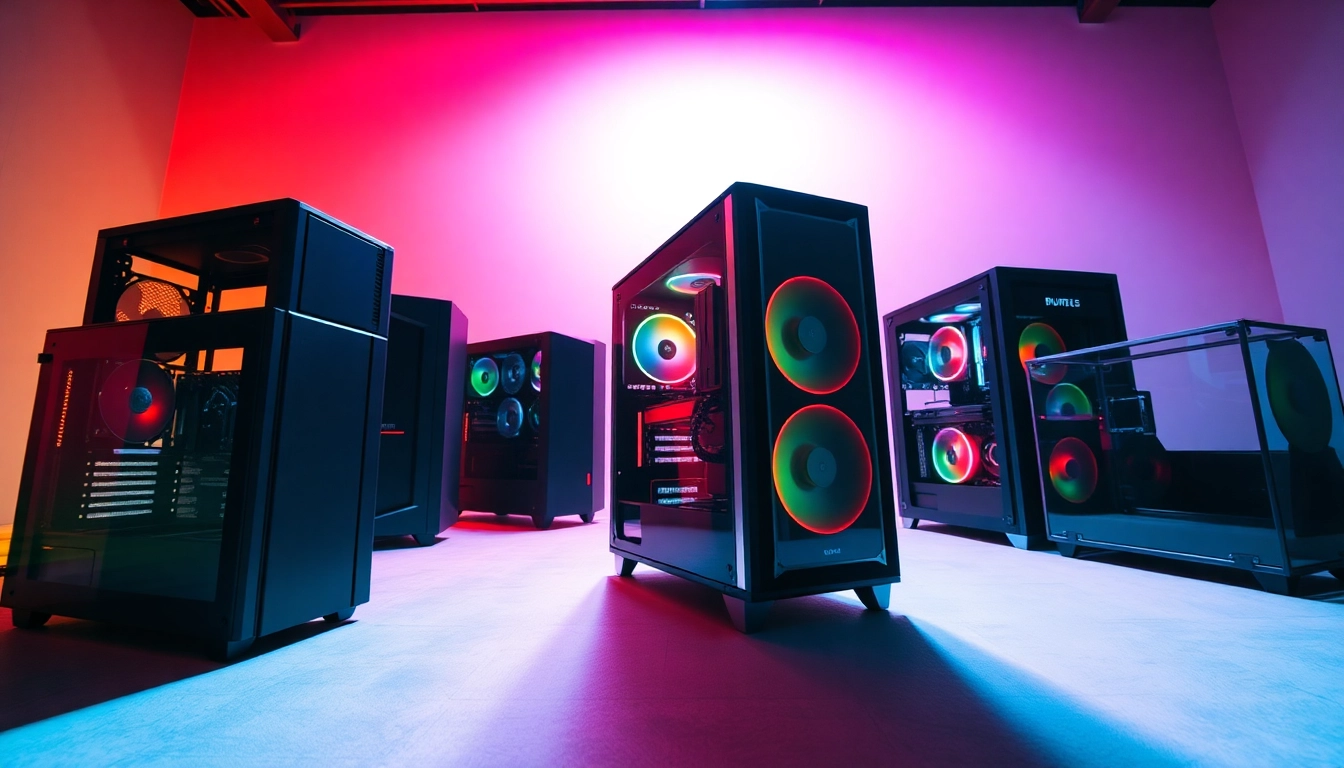Overview of Android Digital Signage Player
The digital signage landscape has evolved remarkably, driven by the need for dynamic and versatile content delivery systems. One of the most efficient and popular solutions is the Android digital signage player. As organizations seek to engage audiences effectively, the demand for user-friendly, adaptable, and cost-effective digital signage solutions has surged. This article delves into the intricacies of Android digital signage players, detailing their functionalities, benefits, and implementation processes.
What is an Android Digital Signage Player?
An Android digital signage player is a playback device that allows digital content to be displayed on a wide range of screens through an Android operating system. Essentially, it enables users to create, manage, and distribute content from a centralized location, enhancing productivity and engagement levels. These players can transform standard televisions and displays into interactive and visually appealing signage that can be used in various environments, including retail stores, corporate offices, restaurants, and educational institutions.
Key Features and Benefits
- User-Friendly Interfaces: Many Android digital signage players come with intuitive interfaces and software solutions that allow users to easily set up and manage content without extensive technical know-how.
- Versatility: They can display a variety of content types, such as images, videos, live feeds, and interactive applications, making them suitable for any advertising or informational needs.
- Remote Management: These devices often support remote operation and updates, allowing administrators to change content, monitor performance, and troubleshoot issues from a distance.
- Cost-Effective Solutions: Compared to traditional digital signage systems, Android players are generally more affordable, providing a robust option for businesses of all sizes.
- Scalability: Businesses can easily expand their digital signage system by adding more display devices and integrating them into the existing network.
- Integration Capabilities: They can be easily integrated with various applications and systems, enhancing functionality and improving user experience.
How It Works in Digital Signage
The functionality of an Android digital signage player typically involves several components working together. The player receives instructions from a digital signage software platform, which specifies what content to display and when. Images and videos are uploaded to the software, which then communicates with the player over Wi-Fi or Ethernet. The player processes these instructions and outputs the content to connected displays. This process not only simplifies content management but also enhances the overall digital signage experience for end-users.
Choosing the Right Android Digital Signage Player
Factors to Consider
When selecting an Android digital signage player, several key factors should inform the decision-making process:
- Content Management System (CMS): Choose a player that integrates well with a CMS that suits your content needs. A robust CMS will facilitate the creation, curation, and scheduling of content.
- Performance Specifications: Assess the processor speed, RAM, and storage capacity of the player. Higher specifications will typically enable smoother performance and allow for more complex content.
- Connectivity Options: Consider players with multiple connectivity options such as HDMI, USB, and Wi-Fi. This ensures easier integration with existing display systems.
- Support for Multiple Formats: Check if the player supports various media formats, as this could broaden the types of content you can display.
- Remote Management Features: Look for players that allow for remote monitoring and content updating, which can save time and effort in managing signage.
- Warranty and Support: A comprehensive warranty and responsive customer support from the manufacturer can provide peace of mind and assistance if issues arise.
Comparison with Other Digital Signage Solutions
While Android digital signage players are a popular choice, it’s essential to understand how they compare with other signage solutions. Traditional digital signage players, often using proprietary systems, can be less flexible but may offer some advanced features tailored for specific industries. In contrast, Android players typically provide greater customization, cost-effectiveness, and a more extensive range of applications due to their open-source nature. Assessing these differences can help businesses choose the most appropriate solution based on their specific needs.
Budget Considerations
Budget plays a crucial role in the selection of a digital signage player. Android digital signage players are generally more economical than their non-Android counterparts, making them accessible for various budgets. However, it’s important to consider not just the initial purchase price, but also the total cost of ownership, which includes maintenance, software licensing fees, and content creation costs. By evaluating all financial aspects, organizations can make informed decisions that align with their budgetary constraints while still maximizing their digital signage impact.
Setting Up Your Android Digital Signage Player
Installation Steps
Setting up an Android digital signage player involves a straightforward process:
- Unbox and Connect: Begin by unboxing the player and connecting it to a display screen using the HDMI cable. Ensure that the power source is connected to the player.
- Network Configuration: Connect the player to your local network through Ethernet or Wi-Fi after powering it on. This step is crucial for remote management and content updates.
- Install Required Software: Depending on the player, you may need to install specific applications that facilitate content management and playback functionalities.
- Activate the Device: If required, activate the device by following the manufacturer’s instructions. This often involves entering a license key or logging into a management portal.
- Initial Setup and Configuration: Configure the player settings according to your preferences, including display settings and user accounts.
Connecting to Displays
Connection to displays can usually be done via HDMI or compatible ports depending on the type of displays used. It’s essential to ensure that the resolution and aspect ratio settings of both the player and the display match for optimal performance. Additionally, users should evaluate if any adapters are necessary, particularly when connecting to older display technology.
Configuring Software Settings
Once physically set up, configuring software settings is equally critical for maximizing the functionalities of your Android digital signage player. This may include:
- Layout Selection: Choosing the appropriate layout for your content display enhances visual appeal.
- Content Scheduling: Setting up schedules for when specific content should appear ensures timely and relevant messaging.
- Account and User Management: If multiple users will access the signage system, configuring user roles and permissions can improve security and content management efficiency.
Content Creation for Android Digital Signage Player
Design Principles to Follow
When preparing content for digital signage, several design principles should guide the process:
- Simplicity: Keep designs clean and uncluttered. Overly complicated visuals can confuse viewers and detract from the key messages.
- Visual Hierarchy: Use size, color, and placement to establish a clear visual hierarchy that guides the viewer’s eye through the content.
- Brand Consistency: Ensure that all content aligns with the organization’s branding guidelines to foster recognition and trust.
- Legibility: Choose fonts and colors that are easy to read from a distance.
- Engagement Elements: Incorporate interactive elements where possible to engage viewers and make the experience more dynamic.
Tools and Software for Content Creation
Numerous tools and software options exist to assist in creating powerful digital signage content. Some of the most popular include:
- Graphic Design Software: Applications such as Canva and Adobe Creative Suite enable users to design professional-grade visuals tailored for digital displays.
- Video Editing Software: Tools like Final Cut Pro or Adobe Premiere can help create and edit engaging video content specifically for signage.
- Content Management Systems: Cloud-based software solutions provide templates and management capabilities that streamline the content creation process.
Best Practices for Engaging Content
Creating engaging content necessitates a strategic approach. Consider implementing the following best practices:
- Know Your Audience: Tailor content to address the interests and preferences of your target demographic.
- Use High-Quality Media: Ensure all images and videos are high resolution and professional grade to enhance viewer experience.
- Regular Content Updates: Keep signage content fresh and relevant by regularly updating it based on ongoing promotions or seasonal campaigns.
- Test Display Positions: Testing different display placements can inform the most favorable positioning for maximum visibility and engagement.
Measuring Success of Your Android Digital Signage Player
Key Performance Indicators
To accurately assess the effectiveness of your Android digital signage player, it is essential to track various key performance indicators (KPIs):
- Audience Engagement: Measure how viewers interact with the content to gauge effectiveness. This can include tracking clicks on interactive elements or observing audience dwell time.
- Content Reach: Monitor how many viewers the signage attracts. This may involve capturing traffic data or implementing analytics tools that can provide insights into view counts.
- Conversion Rates: Track how many viewers take significant actions, such as purchasing or subscribing after viewing specific content.
Monitoring and Analyzing Engagement
Utilizing analytics tools can provide vital insights into content performance. Real-time monitoring allows organizations to analyze viewer behavior and engagement levels. Consider implementing QR codes or other interactive features to gather data on viewer actions and preferences.
Adjusting Strategies Based on Data
Continuous improvement is key to effective digital signage management. By regularly reviewing performance data and adjusting content strategies accordingly, organizations can enhance engagement and ensure their messaging remains impactful. This may involve experimenting with different content types, formats, or display schedules based on metrics observed.



